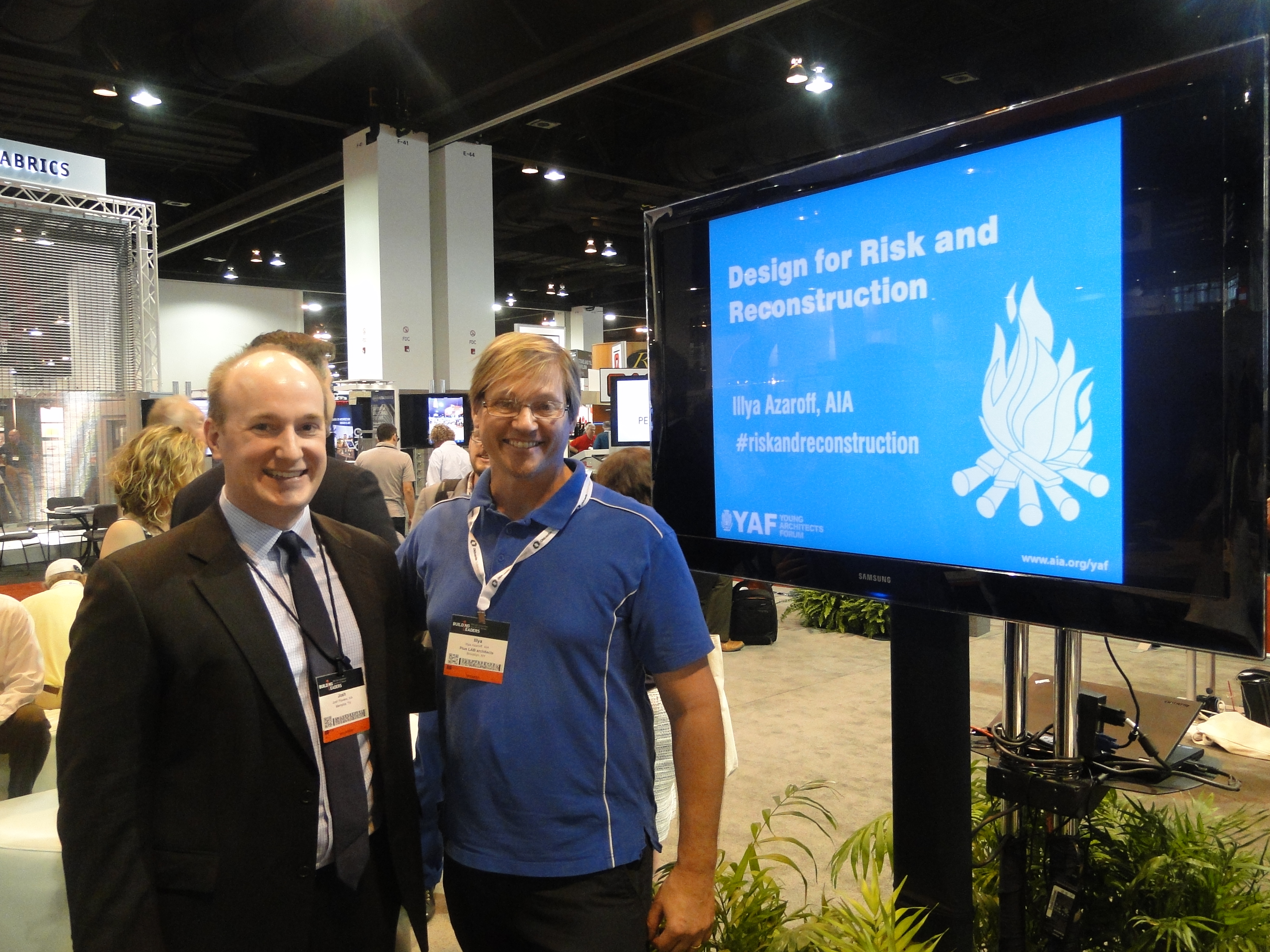by: js
The statistics on population growth when overlaid with predictions about natural disasters are haunting. Last year, 92 million people were displaced because of natural disasters. By 2050, that number is expected to increase to 200 million. By 2100, the number could reach 500 million. According to Illya Azaroff, AIA, principal of +LAB and co-chair of the AIANY Design for Risk and Reconstruction Committee (DfRR), if we are not proactive in mitigating the effects of these events, we could be paying $200 trillion due to devastation, in addition to being unable to house those who will be directly affected by natural disasters.
“We can’t get out of the way of disaster,” said David Dixon, FAIA, principal of Goody Clancy, the lead firm developing the New Orleans Master Plan Post-Katrina. “When you have complex social capital, you cannot make people pick up and move 20 to 30 miles out of town.”
And while we cannot possibly ask all of Long Island to evacuate, asserted Lance Jay Brown, FAIA, 2014 AIANY President-elect and co-chair of the DfRR Committee, architects and planners do have the ability to help mitigate threats from natural disasters. Referencing historic incidents that have had significant effects on construction, including the 1835 burning of Wall Street and 9/11, Brown noted the key challenge is to maintain life on the street while protecting structures from damage.
Azaroff, Brown, and Dixon agreed that innovative political leadership is necessary to resiliency. With the “Boston-Washington Megalopolis” projecting 58.1 million people by 2025, Azaroff emphasized the need to think regionally. Dixon suggested that the U.S. look to other countries for inspiration and guidance, including Hafencity in Hamburg, Germany, a development built outside of the seawall in an at-risk location that incorporates strategies such as floating platforms and elevated walkways to mitigate storm surge.
As the DfRR co-chairs, Brown and Azaroff encouraged all AIA chapters to start committees that address risk, reconstruction, and resiliency. Azaroff presented some of the events the committee has hosted over the past year, including “Freeboard,” a charrette organized with the NYC Department of City Planning in which 80 design professionals came together to examine sea level rise in NYC (See “Design for the Rising Tide,”) by Benedict Clouette, e-Oculus, 03.28.12). They also presented the Post-Sandy Initiative [http://postsandyinitiative.org/], emphasizing that the Executive Summary could be a template for other chapters to tailor as suited to their locations. Ultimately, Azaroff outlined AIANY’s advocacy and action plans related to preparedness, including ongoing training of design professionals; continued discussions and events about risk and reconstruction; and efforts to engage politicians in passing legislation such as the Good Samaritan Law, making it safe for architects to act as first responders when the next disaster strikes.
Jessica Sheridan, AIA, LEED AP BD+C, is a project manager at Gensler, and the AIANY Associate Director.
Event: 2013 AIA Convention: Designing for Risk and Reconstruction: Preparedness, Mitigation, and Planning for Risk in the 21st Century
Location: Colorado Convention Center, Denver, 06.21.13
Speakers: Illya Azaroff, AIA, Principal, +LAB, Co-chair, AIANY Design for Risk and Reconstruction Committee (DfRR); Lance Jay Brown, FAIA, 2014 AIANY President-elect, Co-chair, DfRR Committee; David Dixon, FAIA, Principal, Goody Clancy









